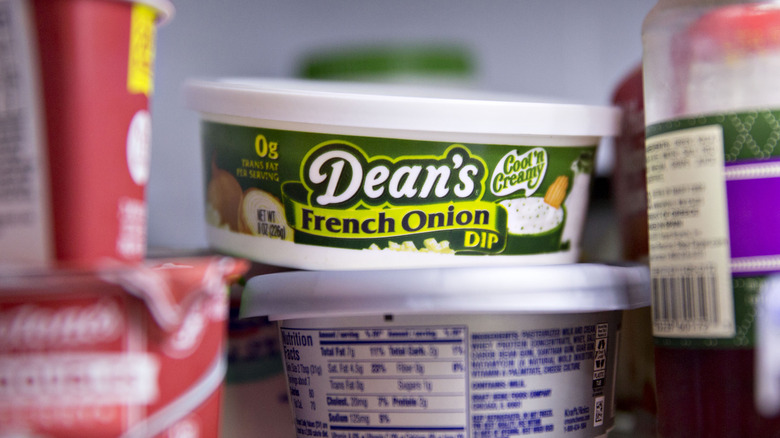
French onion dip, a beloved party staple and snack favorite, is known for its creamy texture and savory flavor. However, like any perishable food, it requires proper handling and storage to ensure both safety and quality. Understanding how long French onion dip can sit out at room temperature and the best practices for refrigeration are crucial for preventing bacterial growth and maintaining its delicious taste. This article will delve into the essential guidelines for storing French onion dip, empowering you to enjoy this classic treat safely and confidently.
This comprehensive guide will explore the safety considerations surrounding how long can french onion dip sit out, provide detailed refrigeration guidelines, outline the typical shelf life of both homemade and store-bought dips, and equip you with the knowledge to identify signs of spoilage. By following these simple tips, you can ensure your French onion dip remains a delightful treat for all occasions.
French Onion Dip Safety
The primary concern when it comes to storing French onion dip is bacterial growth. Bacteria thrive in warm temperatures and moist environments, making room temperature storage a breeding ground for potential foodborne illness. To minimize the risk of contamination, it’s crucial to adhere to strict guidelines regarding how long can french onion dip sit out.
The general rule of thumb is that perishable foods, including French onion dip, should not be left at room temperature for more than two hours. This timeframe applies even if the dip appears fresh and appealing. After two hours, bacteria have had ample time to multiply to unsafe levels, posing a health risk.
When hosting gatherings or preparing dips in advance, it’s essential to keep them refrigerated until serving time. Use an insulated container with ice packs to transport dips safely and maintain their cold temperature.
Refrigeration Guidelines
Refrigeration is the most effective way to slow down bacterial growth and extend the shelf life of French onion dip. When storing your dip, follow these guidelines for optimal preservation:
- Container: Transfer your dip to an airtight container to prevent exposure to air and potential contamination. Glass or plastic containers with tight-fitting lids work well.
Temperature: Ensure your refrigerator is set at 40°F (4°C) or below. This temperature range effectively inhibits bacterial growth.
Placement: Store the dip on a shelf in the coldest part of your refrigerator, typically towards the back and away from the door. Avoid storing it near raw meat or poultry to prevent cross-contamination.
Shelf Life of French Onion Dip
The shelf life of French onion dip depends on whether it’s homemade or store-bought and how well it’s stored.
- Homemade: Refrigerated homemade French onion dip typically lasts for 3-5 days. However, it’s essential to check for signs of spoilage before consuming it.
- Store-Bought: Commercially prepared French onion dip usually has a longer shelf life, often lasting up to 1 week when refrigerated according to the manufacturer’s instructions.
Always refer to the “best by” or “use by” date printed on the container for the most accurate shelf life information.
Signs of Spoilage
To ensure your safety and enjoyment, it’s crucial to be able to identify signs of spoilage in French onion dip. Discard any dip that exhibits the following:
- Off Odor: A sour, rancid, or unusual smell indicates bacterial growth and potential spoilage.
- Change in Texture: If the dip becomes watery, slimy, or excessively thick, it’s a sign of deterioration.
- Mold Growth: Any visible mold on the surface or within the dip is a clear indication of spoilage and should be discarded immediately.
Storage Tips for Homemade Dip
When making your own French onion dip, follow these storage tips to maximize its freshness:
- Cool Completely: Allow the dip to cool to room temperature before refrigerating it. This prevents condensation from forming inside the container, which can lead to spoilage.
- Portion Control: Divide the dip into smaller containers for easier portioning and quicker cooling.
- Label Clearly: Label each container with the date of preparation to track its freshness.
Conclusion
Understanding how long French onion dip can sit out and implementing proper storage techniques are essential for ensuring both safety and quality. By adhering to the guidelines outlined in this article, you can confidently enjoy this delicious dip while minimizing the risk of foodborne illness. Remember to refrigerate your dip promptly after opening or preparing it, check for signs of spoilage regularly, and always prioritize safe handling practices.
